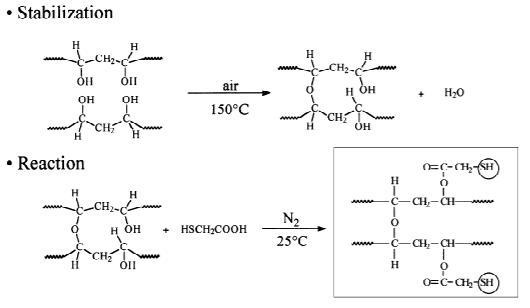All You Need to Know About Polyvinyl Alcohol
Polyvinyl Alcohol, also referred to as PVA is a polymer which is soluble in water. A Polyvinyl Alcohol manufacturer offers PVA widely for different purposes. The uses include plastics, textiles, adhesives, coatings, sealants. Paint manufacturing and various other applications. PVA is a polymer type which is usually offered in the form of powder. Polyvinyl alcohol has many grades or levels that are readily available in varying solubility properties and viscosity.
Polyvinyl alcohol is quite different as compared to polyvinyl acetate, also referred to as PVA. PVA is insoluble when poured in water. PVAs emulsions are utilized for various coatings, paints and adhesives. As per research, most significant producers of PVA in the market are Europe, North America and the Asia Pacific region.
Due to its biodegradable characteristics, PVA now has become high luring for the industries, especially for an polyvinyl alcohol fiber manufacturer. Polyvinyl alcohol is manufactured and used as drops for medication purposes. As a medicine, it is used to relieve irritated and dry eyes.
As a medicine, PVA is mixed with povidone, PP glycol, glycerin and others. As an eye drop, it serves the purpose of eye lubricant. Eye drops maintain the eyes’ moistness. Eye-drops also aid to save the eye from infection and injury.
Eye drops also lessen the problems like eye burning; feeling of something is in the eye and itching. Usually, drops are used as per need basis. If the requirement is more, drops are used up to two times daily. Apart from medical usages, PVA is used for food supplements as a coating agent. Besides, polyvinyl alcohol is also used to strengthen textile papers and yarn.
Since eyes are one of the most sensitive areas in a human body, using eye drops may make eyes blurred temporarily. Besides, irritation, minor burning and stinging may also occur temporarily. As mentioned above, PVA is soluble both in cold and hot water. The solution is generally prepared as described below:
Polyvinyl alcohol in powder form is gently added to cold water. Cold water is used to avert the formation of lumps, as lumps become sticky. Chances of lumps formation increase with the rise in temperature. In a few cases, water at less than room temperature might be utilized to lessen the risk.
When the powder is dispersed to the full, the mix is pushed to provide heat. When the heating process reached the desired temperature, the mix turns solubilized. Mixing goes on at the current temperature until the PVA is solubilized. Depending upon the material’s grade and the efficacy of the agitation system, this can require some time to be fully completed.
The heating level of the procedure increases to cost and the processing time. Inefficiency during agitation takes a bit too long to reach to solubility point at the desired temperature. A shear’s degree is needed to fasten the process.
A robust agitation is needed to make powder wet. The moistening of powder leads to problems such as aeration. Agitation cannot break lumps instantly. Extended time for mixing is required for the completion of solubilization. Immersion and dispersion of the PVA powder become increasingly stringent due to the rise of viscosity’s initiation.
A machine known as a high shear mixer is used to disperse as well as to solubilize polyvinyl powder in hot water. The machine takes less time as compared to conventional procedures. The general method to manufacture the solution is given below:
THE BENEFITS
• The dispersion of PVA into hot water removes the stage of heating. As a result, the processing time gets reduced dramatically.
• Before the starting of a buildup of viscosity, PVA powder is dispersed.
• Quick dispersion of PVA powder strikes out any operator’s error.
• Agglomerate is diminished through high shear mixing. As a result, you get rapid solubilization and better consistency of batch.
A vessel is used to charge the hot water, and the mixer gets started. The PVA Is put to the water. PVA is wetted out quickly and mixed into the liquid. The rotor manages a forceful suction that pulls ingredients into the work ahead of the mixer.
The centrifugal force draws the materials to the work head’s periphery where the ingredients are subject to extremely high shear in the space between the stator and rotor before being pushed out through the stator’s holes and projected back into the mixture. Any agglomerate is quickly dispersed.
Fresh kinds of stuff are simultaneously pushed into the work head, making a circulatory mixing’s pattern. All the materials of the vessel are passed quite a few times through the work head.
Now agglomerates, if any, are broken down, and the solubilization process gets accelerated. Polyvinyl alcohol has not only a wide range of usage, but it also gives a variety of advantages. So, if you are entering into polymer business, PVA is the must-have thing for you.
